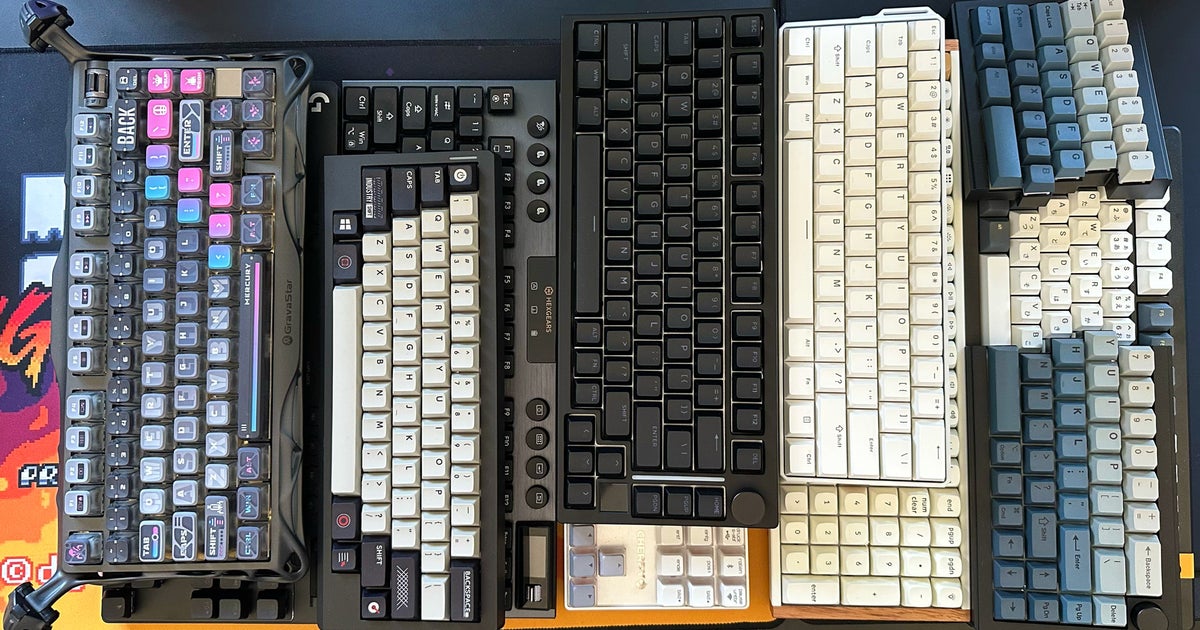I’ve written for seven years about just how much I enjoy typing and gaming on mechanical keyboards, so it’s perhaps not surprising that I tend to ask a lot of companies to send over their latest and greatest options. Today I’m rounding up 10 keyboards that I’ve tested this week (!), from feature-focused gaming boards to more design-oriented mechanicals for typists.
Full disclosure right from the off: only one keyboard here is a full-size option with a number pad, and from the comments on recent keyboard review roundups we know that the Eurogamer commenters love their number pads. We have full-size keyboard recommendations already, but we also have some special full-size reviews coming your way soon – so stay tuned.
In the meantime, get ready for this selection of weird and wonderful mechanicals of all shapes and sizes, from weird HR Giger inspired and retro Japanese designs from brands you’ve never heard of to esports-focused options from much bigger names. You might even find your next keyboard here, so have fun!
- Keychron K4 HE: a stylish full-size keyboard with rapid trigger
- GravaStar Mercury K1 Pro: totally unique, brilliant performance
- Gamakay TK75HE V2: the quietest mechanical I’ve ever tested
- Logitech Pro X TKL Rapid: the new esports favourite
- Monsgeek Fun60: a cheaper Wooting 60HE?
- Epomaker Split 65: a comfy and easy to use ergonomic
- Cherry Xtrfy MX 8.2 TKL Wireless: silly name, beautiful board
- Epomaker Hack 59: a modern HHKB alternative
- Glorious GMMK 3 HE: endless customisation with a failing
- Hexgears Immersion A3: a cheap G915 TKL alternative
- Wrapping up
Keychron K4 HE: a stylish full-size option with rapid trigger
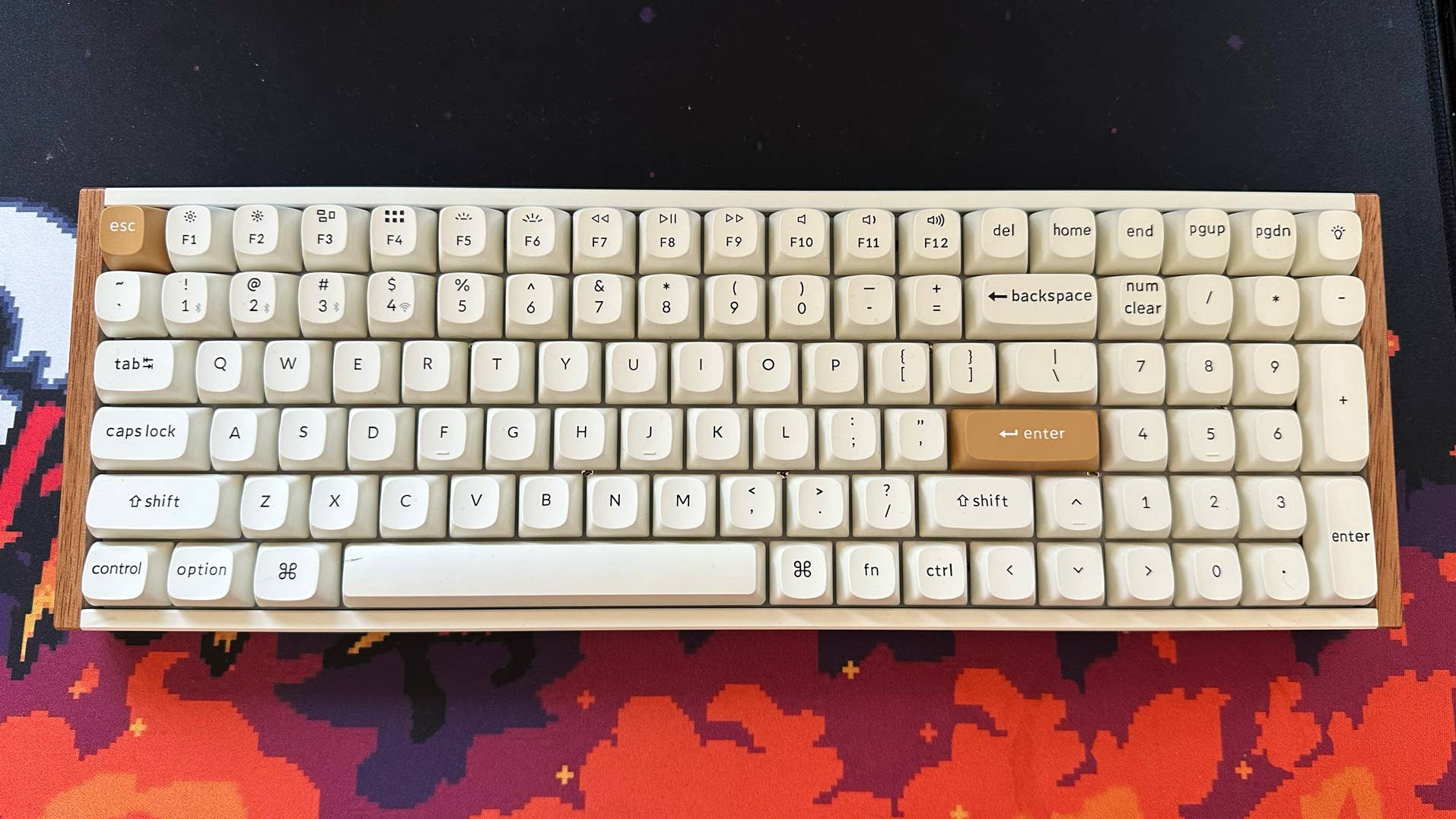
I heard you guys love number pads – so you’re going to love this keyboard too. The Keychron K4 HE Special Edition is a wood-veneered, 96 percent size keyboard with Gateron double-rail magnetic “nebula” switches that provide a soft, linear travel and are comfortable for typing and gaming alike. The 96 percent layout contains nearly all of the keys on a standard keyboard, but packed into a neater design where the navigation keys go up top and the arrow keys intrude into the numpad and alphanumerics. It takes a day or two to get your head around, but allows for a full keyboard in a much smaller space.
Like other Special Edition keyboards we’ve tested in the past from Keychron, like the smaller K2 HE, the K4 HE comes with attractive rosewood accents that complement the cream-coloured keys and aluminium frame very nicely; a black/wood model is also available, while standard models with metal frames and backlit keycaps are a touch cheaper. Given the popularity of wood in PC cases like the SFF Fractal Terra as of late, it’s nice to see keyboards evolve to use more natural materials too.
As this keyboard uses magnetic Hall Effect switches, you get the usual nifty features – adjustable actuation points from 0.2mm to 3.8mm that help you find the perfect blend between speed and accuracy, a SOCD (simultaneous opposing cardinal directions) feature that prioritises the last key pressed when strafing in FPS titles, a dynamic keystrokes feature that lets you set multiple actions to different points in the keypress, and a dynamic rapid trigger mode that dispenses with set actuate/release points to speed up inputs even further. It’s essentially the full trick bag pioneered by Wooting, all programmable via web-based software. I appreciate that the keyboard is set up with most of these features disabled by default – it’s not ideal to have rapid trigger when typing, for example – but enabling them is easy enough and the web tool works reliably.
Overall, a perfectly-built, good-looking and responsive keyboard with every conceivable feature you might want from a modern gaming board, apart from higher polling rates I suppose. Keychron continues their propensity for producing excellent value offerings that don’t compromise on quality.
GravaStar Mercury K1 Pro: totally unique, brilliant performance
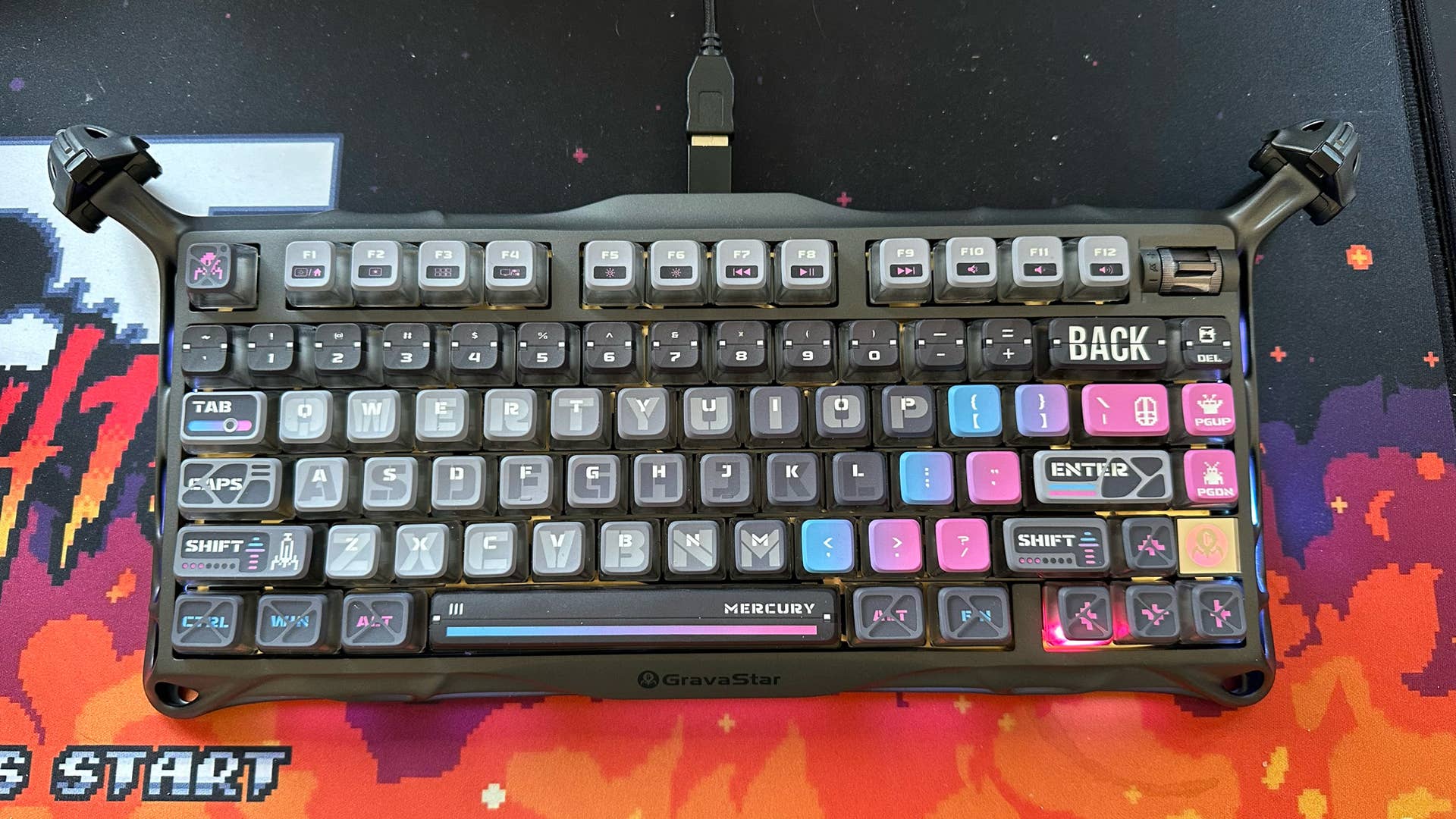
The Gravastar Mercury K1 Pro feels like the sort of thing HR Giger would be designing if he were still around and really into keyboards for some reason, with flip-out claws, a skeletal metal chassis and some seriously spacey keycaps. It’s absolutely out there versus basically anything else on the market, and for that I absolutely adore it. It also feels extremely well constructed, with absolutely no give anywhere on the board.
Behind the almost unsettling design, there’s a solid keyboard that works well for typing and gaming, thanks to gasket-mounted tactile switches. The 75 percent layout includes all of the keys I need – like arrows and Function keys – while being more compact than a standard tenkeyless (TKL) design. Of course, that extra space is then used on creepy tripod claws, but the keys themselves are still all within easy reach.
Elsewhere, there are some nice touches, like a small integrated display in the bottom right, a volume rocker in the top right that can be pressed down to mute, and a 2.4GHz wireless USB dongle built into the greebled underside of the keyboard. It’s clear that a lot of care and attention went into designing this, and even at its steep asking price you won’t feel hard-done. This keyboard is one-of-a-kind.
Gamakay TK75HE V2: the quietest mechanical I’ve ever tested
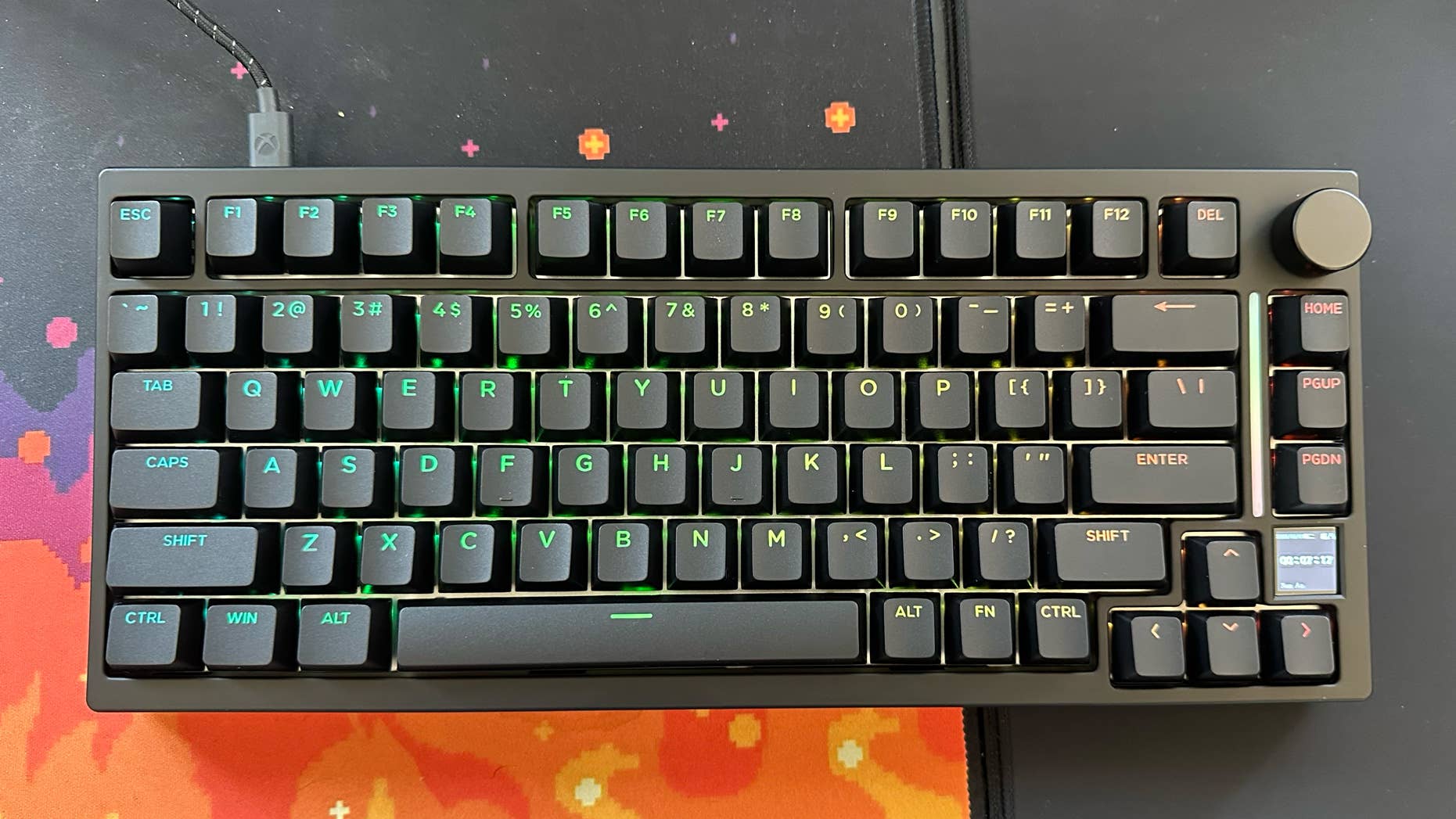
Gamakay’s TK75 keyboard is one of my all-time faves, a 75 percent keyboard with a plastic chassis but increasingly well-built internals for surprisingly little money. The original TK75 was a solid 75 percent size keyboard with a volume wheel, the TK75 HE added Hall Effect magnetic switches and now the TK75 HE V2 adds a small screen for status indicators and the time/date or your choice of (animated) images and up to 8K polling.
The V2 model with Phoenix Silent switches is also the quietest mechanical keyboard I’ve ever heard, with essentially none of the clatter that normally accompanies fast typing on a mechanical – just extremely deep tones that produce a luxurious report. It’s actually a little spooky how little sound this keyboard makes, and it’s pretty much the only mechanical I’d actually recommend for a crowded yet quiet space like a library or office.
The rest of the formula here is as it was: a convenient volume wheel in the upper right, backlit ABS keycaps that show the (optional) RGB lighting, a simple plastic chassis and slightly rubbish Windows-only software. Given the price, the plastic case and old-school software feel like reasonable places to cut costs, and I still highly recommend this model overall.
Logitech Pro X TKL Rapid: the new esports favourite
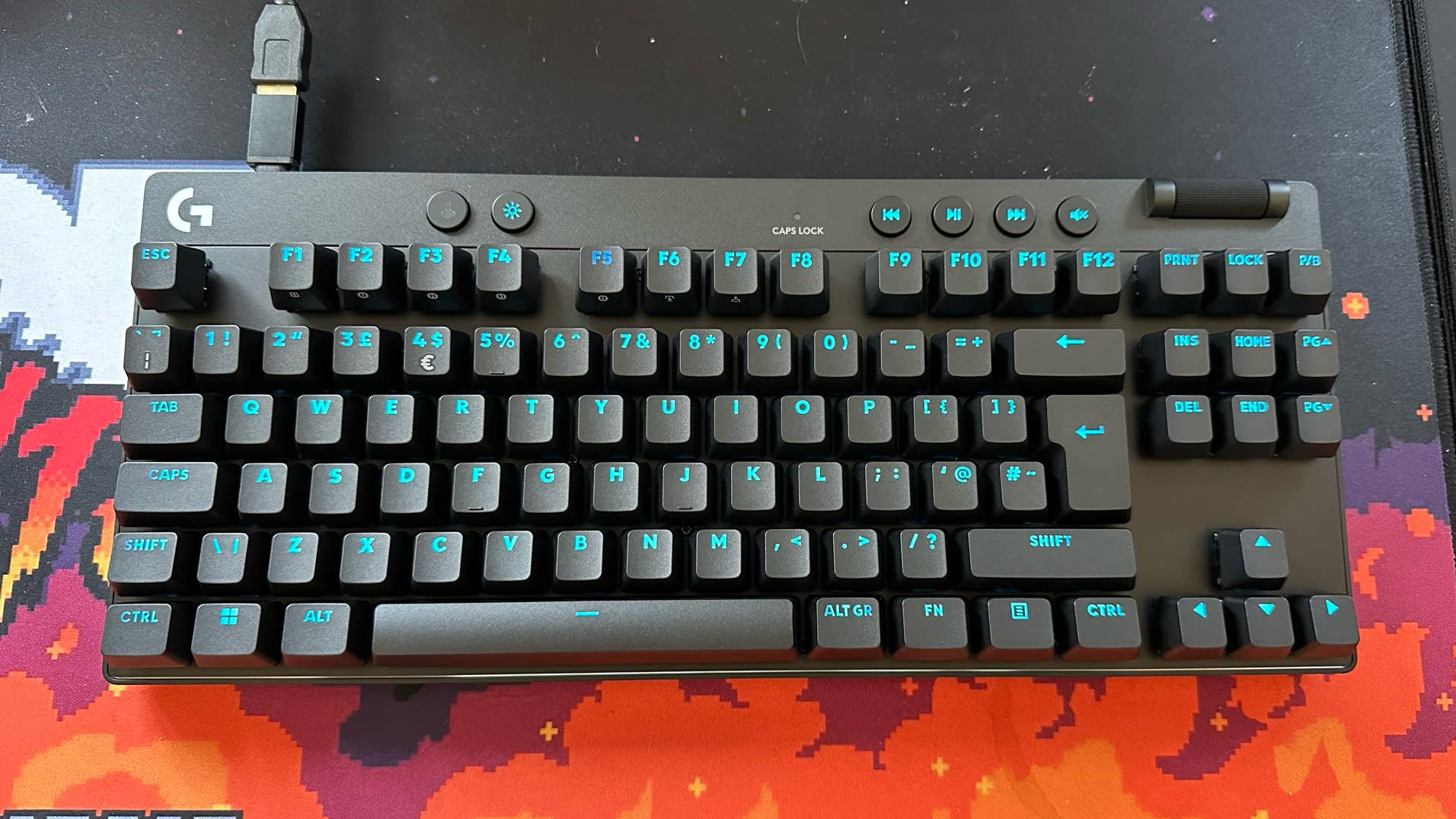
So what’s the difference between the Logitech Pro X TKL, which we previously recommended, and the Pro X TKL Rapid on our desk this week? The answer is simple: the regular Pro X TKL is a wireless keyboard with standard mechanical switches, while the Pro X TKL Rapid is wired-only but has more advanced magnetic switches, and is in fact the first Logitech keyboard to include these. Combined with the keyboard’s existing strengths, including good software and an up to 8000Hz polling rate, is this the new keyboard a better option for competitively-minded FPS players?
In short, yes. The Rapid allows Logitech (and its many sponsored teams and players) to catch up with the trend towards high-performance rapid trigger keyboards that allow players to move more responsively, especially when strafing and counter-strafing, and thereby gain a tiny edge over their rivals.
The Logitech implementation is very much straight down the line, with Hall Effect switches that unlock the usual features: rapid trigger, multi-point actuation (map multiple functions to the same key at different depths), key priority (aka SOCD, which automatically cancels one key press if a specific other keypress is detected – eg if A and D are paired this way, you begin counter-strafing right as soon as D is pressed, rather than waiting for A to be released as normal). I like that you can download setups from within the Logitech software, so you don’t have to be an expert to try out a more advanced config that uses these features.
Elsewhere, the G Pro X TKL Rapid remains a great typing keyboard, though it is the loudest of all the keyboards we tested here. The PBT keycaps are reasonably grippy, which is good, the layout is very standard and there are convenient media controls and a volume wheel. All in all, a reasonable choice for anyone interested in FPS gaming, with a polished experience that justifies a higher price than more boutique offerings.
Monsgeek Fun60: a cheaper Wooting 60HE?
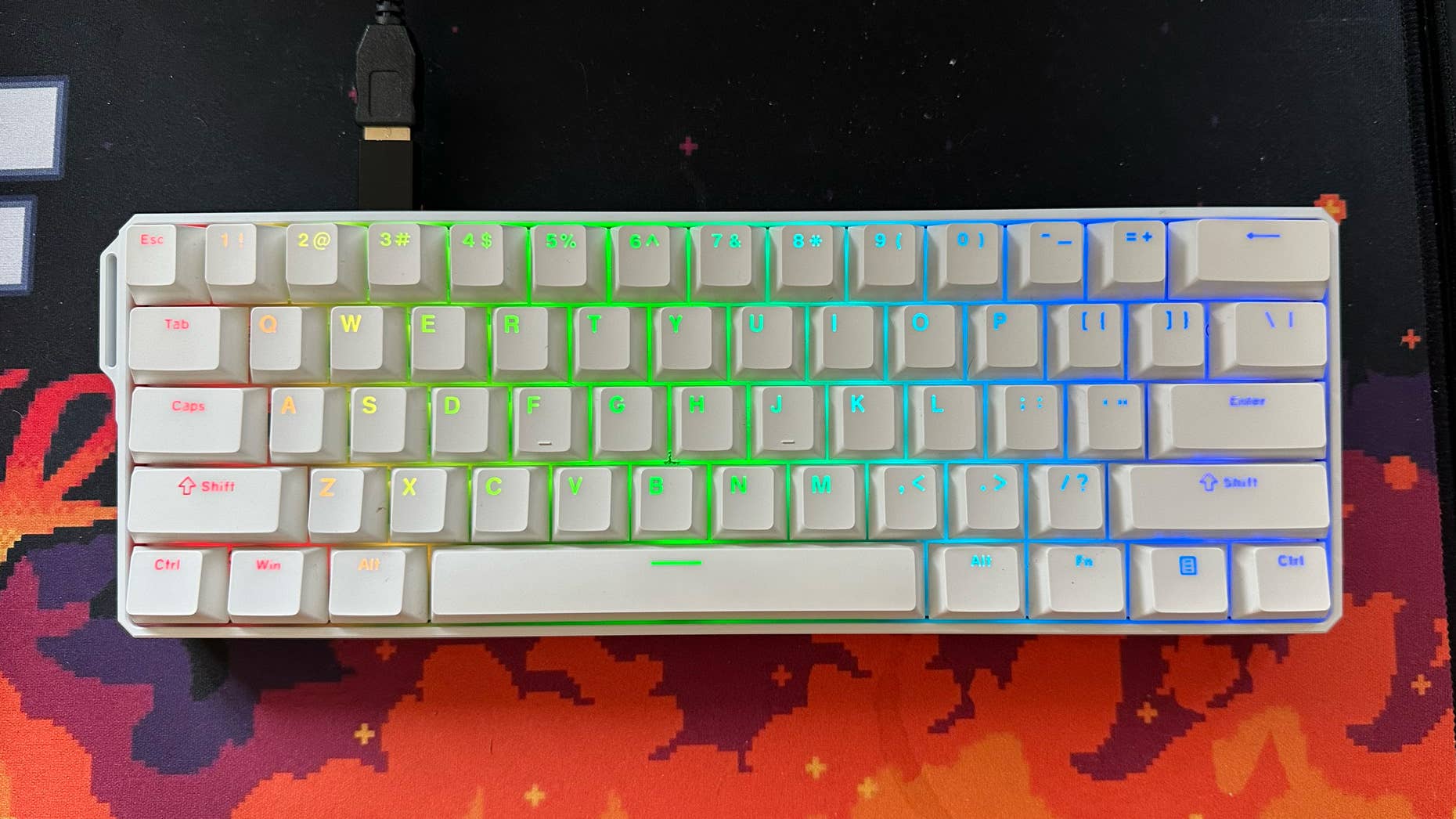
The Wooting 60HE is our current top Hall Effect keyboard recommendation, backed with world-class software and a unique design. The Fun60 Ultra appears to have been made very much in the same mould, as a 60 percent Hall Effect keyboard with rapid trigger and other magnetic switch functionality, but it’s significantly cheaper than the Wooting offering (currently £81 vs £163) while using a nicer aluminium chassis.
The Fun60 also apes the key design language of the Wooting board, down to the loop on the top left corner of the board to affix a 60HE-style fabric strap – though one isn’t included in the box, making it a bit of a damp squib; copying for the sake of copying in the same way that Android phones adopted iPhone-style notches despite a plethora of arguably better designs beforehand.
The Fun60 is still a reasonable option, with a better typing experience out of the box with the provided magnetic switches, a quoted 8000Hz polling rate not found on the 60HE, and some more interesting colourways than the Dutch-built board. However, you do see the cost difference in terms of the software experience, which is nowhere near as polished as what Wooting is offering – in fact, it was a struggle to even get the software to launch on our Windows test system. Given how critical that software is to making the most of its features, the 60HE remains our top pick, but the Fun60 is worth considering as a cheaper alternative.
Epomaker Split 65: comfy and easy to use
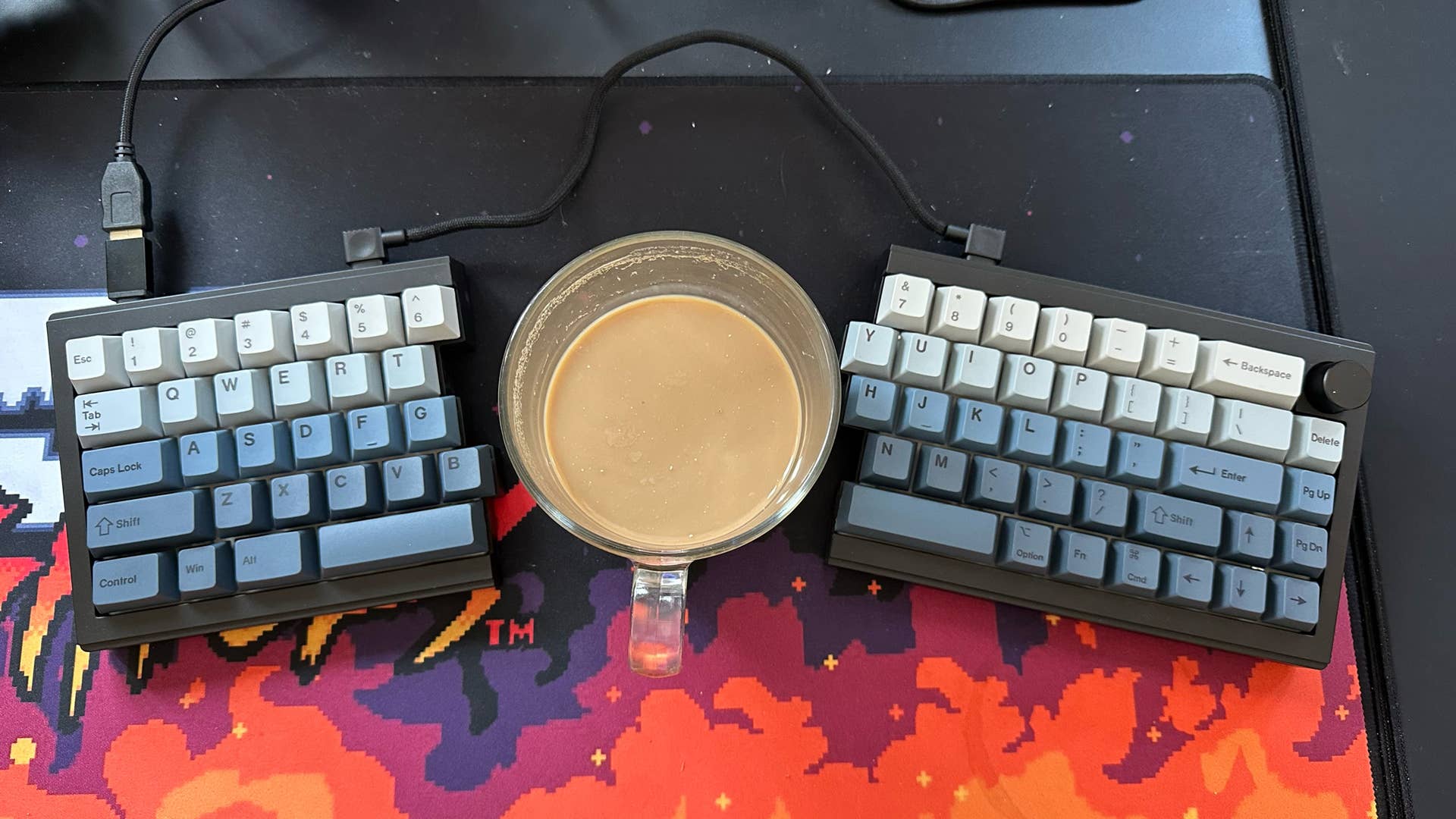
The Epomaker Split 65 is an ergonomic keyboard that’s very easy to learn – just pop apart the two parts when you want to adopt a more comfortable posture and put them back together when you need to bang out an article or whatever at high speed. The familiar layout here is not quite as ergonomically superior as more aggressive departures, with their tenting and wholly rearranged keys, but oftentimes perfect is the enemy of good – and the Split 65 is definitely good.
Apart from its splitting-in-half party trick – which gives you the perfect place to leave a mug of tea, for the record – the Split 65 is a solid choice for both typing and gaming. The 65 percent layout is good because it includes arrow keys while being nicely compact, the wisteria switches and PBT keycaps feel good under the finger, and the layout can be changed to your preference using online VIA or QMK firmware tools.
The splitting does mean that you’ll have a short, flexible double-ended USB-C cable running across your desk, but you do have the choice to shed a further USB-C cable to your computer with both Bluetooth and 2.4GHz wireless on board.
I normally find ergonomic keyboards a bit of an impediment to learn while also doing my regular work, so I was pleasantly surprised to find that the Split 65 was both more comfortable than a standard keyboard and no more difficult to use, even if it did take a day or two to train myself how to press the smaller split space bar dead-on.
Cherry Xtrfy MX 8.2 TKL Wireless XAGA: silly name, beautiful board
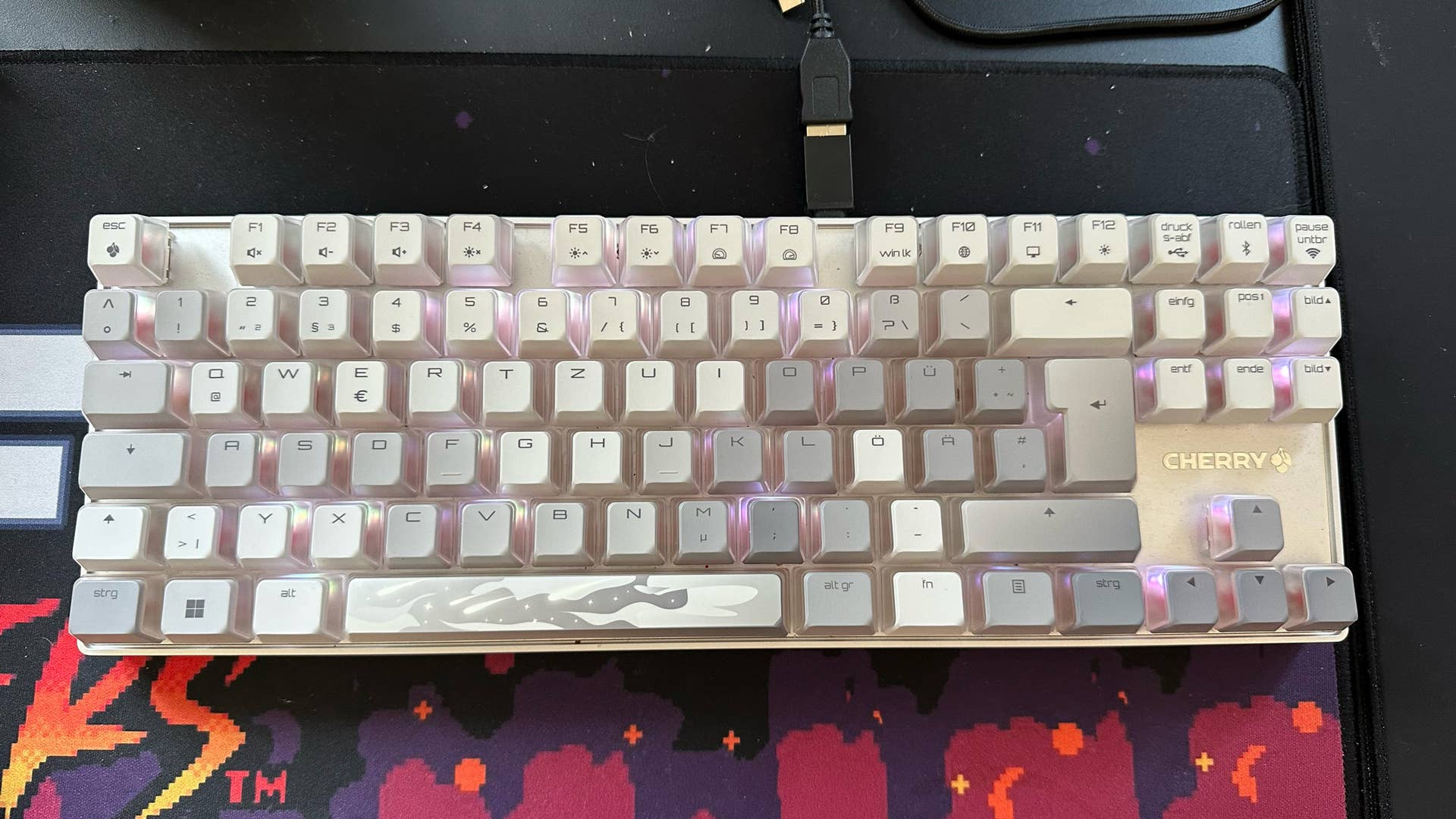
Cherry’s acquisition of Swedish esports-grade peripheral producer Xtrfy has seen the company embrace gaming in a way that the famous switch-maker has never really done before, with the latest release being this long-titled board: the MX 8.2 TKL Wireless XAGA.
That long-butt name belies a fairly straightforward mechanical that offers a rather beautiful white/silver design, a compact TKL layout and a choice between the company’s excellent MX2A blue (clicky) or red (linear) switches. These debuted in 2023 and are much smoother than the MX switches that Cherry has been building since the 80s. The special sauce here is the connectivity, with low-latency 2.4GHz and Bluetooth as well as the usual USB-C wired connection, and an optional metal carrying case ideal for esports stars and serious mechanical keyboard nerds proudly carrying their latest acquisitions to the office.
There’s not a huge amount here in terms of special features – no 8K polling, ergonomic advantages, magnetic switches or the like – but the typing experience is probably the best I’ve had on a Cherry keyboard in some time, and the fetching design and that metal case go some way towards justifying the rather steep cost of admission. Hardly a mass-market option then, but I appreciate Cherry’s new approach to putting out solid keyboards that demonstrate its new switches convincingly.
Epomaker Hack 59: a modern HHKB alternative
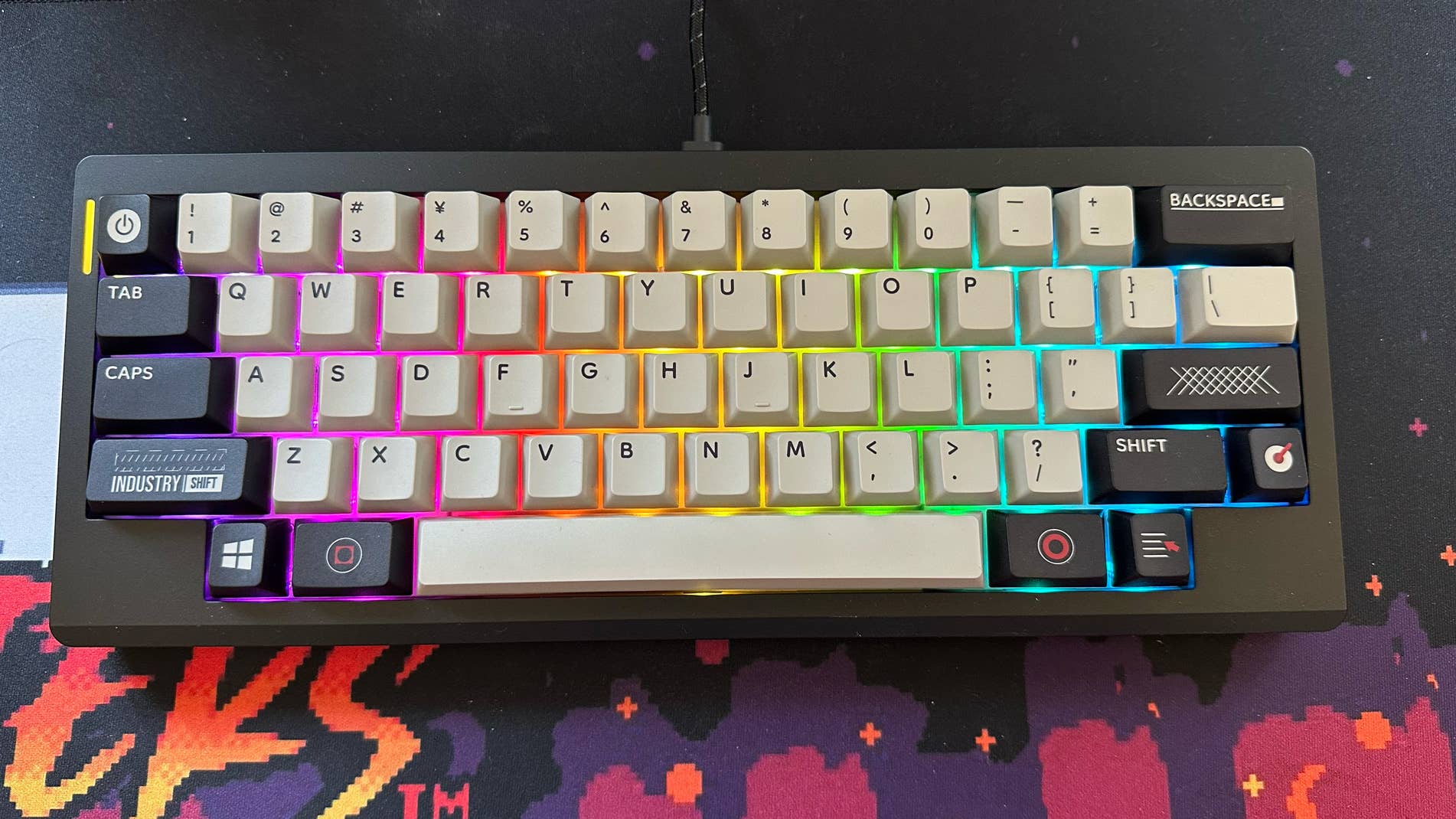
The Hack 59 doesn’t do much to hide its inspiration: the legendary Happy Hacking Keyboard (HHKB), introduced in the 90s, the first well-known 60 percent size compact keyboard. The Hack 59 largely abides by the same design philosophy and layout, ie not including Control keys in the lower corners, but drops the DIP switches used to adjust functionality for a more modern web-based interface with QMK/VIA programming and adds RGB lighting (naturally). This isn’t the most natural layout for Mac or Windows – you’ll want to change Caps to serve as Control, most likely – but it’s an interesting change of past and works excellently in Linux; no surprise given the HHKB’s Unix origins.
Despite its niche appeal, the Hack 59 is well built and feels very pleasant to use, with a nice key chatter that has been tuned with five layers of sound dampening. That produces a slightly deeper sound than most mechanicals using similar switches, though this is still one of the louder mechanicals of the 10 tested here today. Elsewhere, there is the usual tri-mode connectivity, PBT keycaps, gasket-mounted and hot-swap switches and an ABS plastic chassis.
If you like the layout and want to mimic the Linux hackers of old, this is a much more affordable option than a real HHKB – and arguably a more feature-rich alternative too.
Glorious GMMK 3 HE: endless customisation, but first-party GBPT keycaps don’t fit
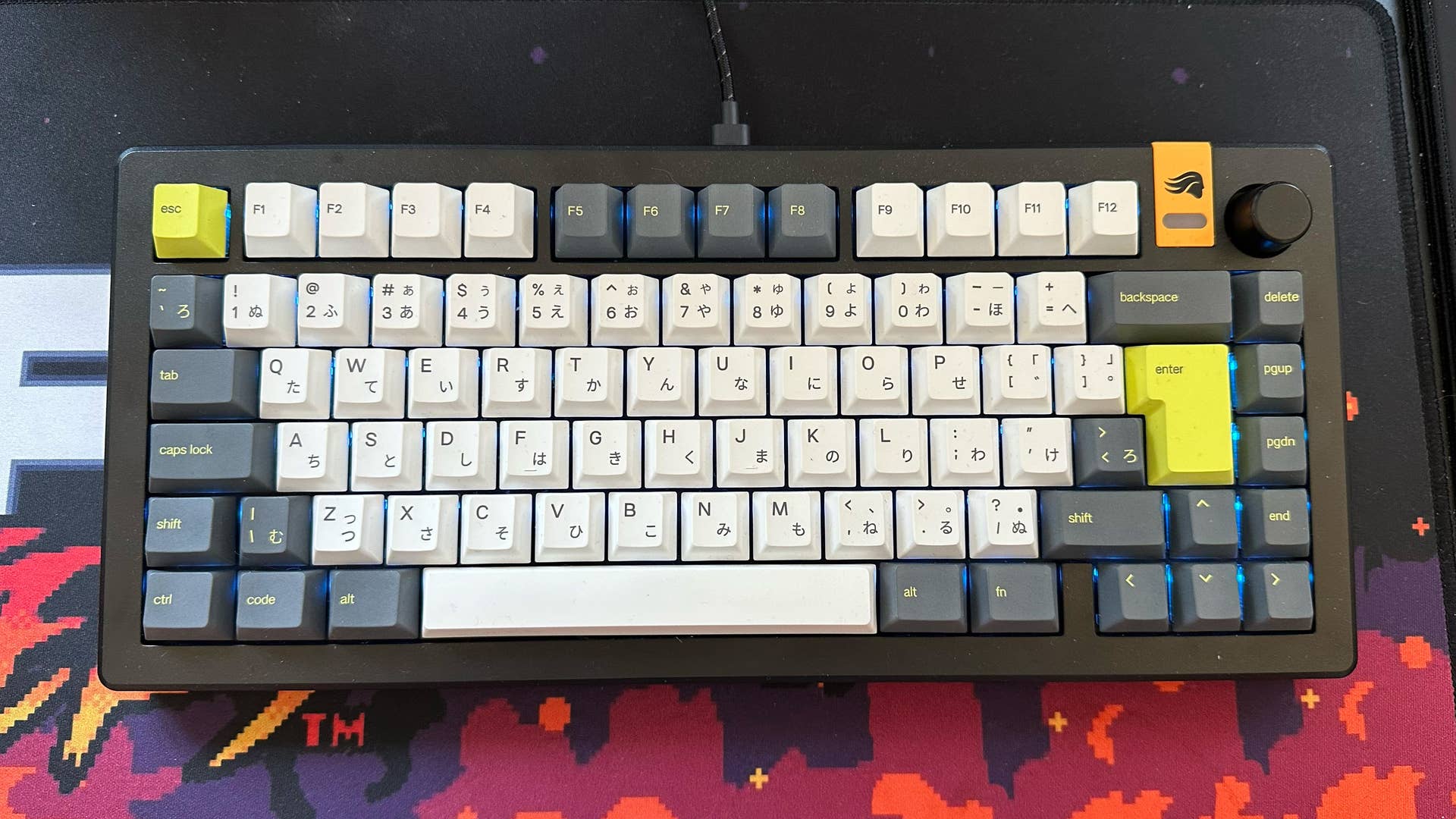
Reece has already reviewed the highly configurable Glorious GMMK 3, but I wanted to add a few of my own thoughts regarding both the keyboard and the continuing series of keycap sets that Glorious has released over the past year. In short, this is a good keyboard that offers reliable performance, doesn’t challenge the likes of Epomaker or Keychron on price, but does offer a lot of flexibility when it comes to constructing your perfect keyboard.
I was sent a 75 percent size model with Hall Effect keys, but you can also get a smaller 65 percent or larger 100 percent size, each available with Hall Effect or traditional mechanical switches, with wired or tri-mode connectivity, and in US/ANSI or UK/ISO configurations with a north- or south-facing PCB. That’s an almost paralysing number of options for beginners, but an intoxicating arrangement for enthusiasts – and it continues ever after with options for different cases, switches, badges, knobs, cables, switch mountings and keycaps. Two “GMMK 3” keyboards can therefore differ massively, but the default GMMK 3 HE 75 model I ended up with has a compact UK layout, decently-implemented rapid trigger functionality and a convenient volume wheel.
The differentiating factor were the GBPT Voltage keycaps that Glorious also sent along, inscribed with Japanese hiragana and in a fetching white, grey and yellow/lime colourway. I like the relatively slick feeling of these keycaps a lot, but there is an issue – they don’t perfectly fit the UK/ISO layout, and I ended up having to use almost random keycaps of the wrong height and colour to fill the space next to left shift (`) and enter (#). I think that if Glorious is going to do its own keycap sets, this embarassing omission ought to be fixed.
Hexgears Immersion A3: cheap Logitech G915 TKL alternative
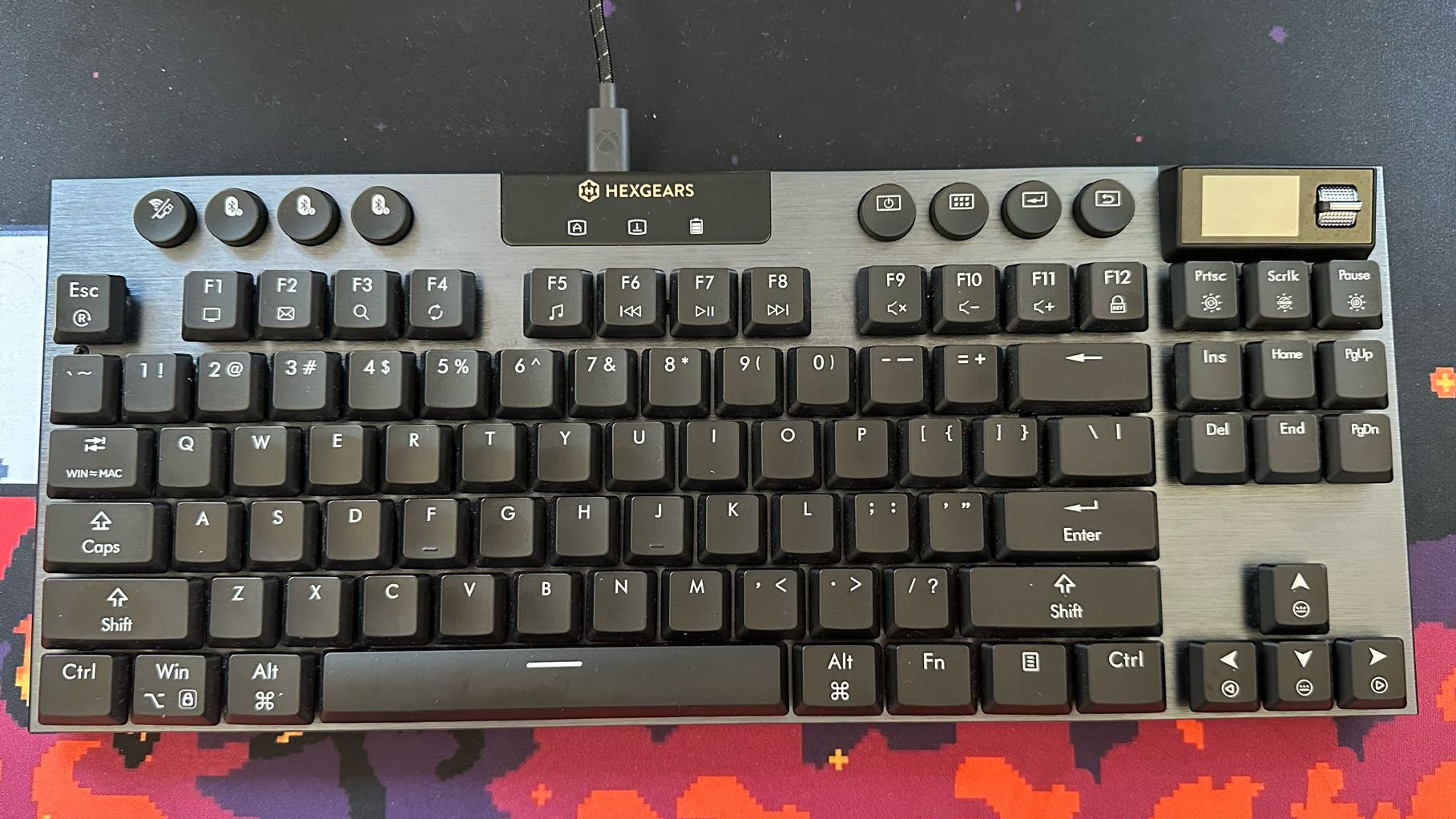
Like the Logitech G915 TKL but don’t want to pay £200 for a keyboard? Hexgears has you covered with a suspiciously similar design that even eclipses the Logi original in some respects, and it costs half as much. This is the Immersion A3, a low-profile mechanical with a faux-metal top plate and circular non-mechanical buttons. Even the font choice is reminiscent of the G915 TKL – though the legends are a lot bigger. However, instead of a wide volume wheel in the upper right, Hexgears opted for a trendy LCD display – with the time, date, modifiers and battery levels. I don’t hate the tweak, though the smaller volume wheel alongside feels nowhere as nice as Logitech’s metal roller.
There are a choice of three switches here – linear white rain, tactile black cloud and clicky hide mountain. My review unit came with white rain, and they were reasonable – though the soft landing here did remind me a bit of a membrane keyboard rather than a super-precise mechanical. I also found out these switches were hot-swap when I pulled off a keycap and the entire switch came out too – not a great indicator of build quality, it has to be said.
Ultimately, I think you’re better off waiting for the Logitech G915 TKL on sale, given its better build quality, more proven low-latency wireless and more developed software, though I respect the grind from Hexgears and the few design deviations elevated the board somewhat. I’d like to see a more novel design next time that iterates on the same low profile TKL brief, as there’s only so far you can go following in someone else’s footsteps.
Wrapping up
Well, if you’ve read every word of this article, I’d like to shake your hand – that’s a heck of a commitment to reading about new keyboards and I applaud your service.
It’s interesting to see just how varied the mechanical market remains, even as features like magnetic switches become more ubiquitous, there’s still a huge amount of choice when it comes to layouts, features and materials… even if there’s much more shameless copying than there is genuine innovation.
Stay tuned for more keyboard reviews and coverage – the next five (!) keyboards I’ll be testing have already arrived at DF HQ. In the meantime, why not let us know which keyboard you’re most intrigued by in the poll below, or tell us that you prefer to see full-size keyboards with a number pad in the comments?
